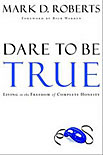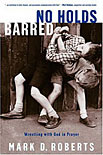« The Seventh Station: Jesus Takes Up the Cross | Home | The Ninth Station: Jesus Meets the Women of Jerusalem »
The Eighth Station: Simon of Cyrene Helps Jesus to Carry His Cross
By Mark D. Roberts | Sunday, April 5, 2009

Copyright © Linda Roberts, 2007.
For permission to use this picture and/or others in this series, please contact Mark D. Roberts
Luke 23:26
As they led him away, they seized a man, Simon of Cyrene, who was coming from the country, and they laid the cross on him, and made him carry it behind Jesus.
Reflection
What a shock this must have been for Simon! After traveling almost a thousand miles from Cyrene in northern Africa to Jerusalem (Note 1), he found the city jammed with pilgrims who, like Simon himself, had come to celebrate the Passover in Jerusalem. So Simon set up camp out in the countryside. On his way into the city, he stumbled into what might have looked from a distance like a parade. But then, as he drew near, Simon saw the horrific spectacle of a badly beaten man stumbling as he was forced to carry the beam of his cross on the way to being crucified. We don’t know for sure whether Simon had any knowledge of Jesus prior to their encounter on the road to Golgotha. It’s likely that he knew nothing about the suffering man before him.
As Simon watched in horror, all of a sudden he found himself pressed into action. The Roman soldiers, recognizing that Jesus didn’t have sufficient strength to carry his cross by himself, “seized” Simon and demanded that he carry the cross instead. No doubt Simon was hesitant, fearing that he might end up sharing Jesus’s fate. Yet he knew enough not to provoke the soldiers, so he took the cross as ordered. We don’t know much more about Simon than this, since he disappears from the biblical record at this point (Note 2).
Although Simon only helped to carry the cross of Jesus and was not actually crucified, he nevertheless illustrates the theological truth found in the letters of Paul in the New Testament. In the letter to the Galatians we read:
I have been crucified with Christ; and it is no longer I who live, but it is Christ who lives in me. And the life I now live in the flesh I live by faith in the Son of God, who loved me and gave himself for me. (Galatians 2:19-20)
The letter to the Romans contains even more detail about what it means to be crucified with Christ:
What then are we to say? Should we continue in sin in order that grace may abound? By no means! How can we who died to sin go on living in it? Do you not know that all of us who have been baptized into Christ Jesus were baptized into his death? Therefore we have been buried with him by baptism into death, so that, just as Christ was raised from the dead by the glory of the Father, so we too might walk in newness of life. For if we have been united with him in a death like his, we will certainly be united with him in a resurrection like his. We know that our old self was crucified with him so that the body of sin might be destroyed, and we might no longer be enslaved to sin. For whoever has died is freed from sin. But if we have died with Christ, we believe that we will also live with him. We know that Christ, being raised from the dead, will never die again; death no longer has dominion over him. The death he died, he died to sin, once for all; but the life he lives, he lives to God. So you also must consider yourselves dead to sin and alive to God in Christ Jesus. (Romans 6:1-11)
When we put our faith in Christ, we shared in his death, not by literally dying, but by dying to sin. Our “old self” was crucified so that we might be set free from our bondage to sin. Now we are alive in Christ, who lives in us.
Thus, in a sense, we ought to identify with Simon of Cyrene, who found himself a surprised participant in the crucifixion of Christ. This is especially true since many of us became Christians without really knowing that we were dying to our old selves so that we might live anew in Christ. We were pitched a gospel of salvation and eternal life without the corollary call to servanthood, sacrifice, and death to sin and self. Thus it was only later in our Christian pilgrimage when we discovered, like Simon, that we were expected to be “crucified with Christ.”
Unlike Simon, however, we aren’t forced to pick up the cross of Christ. Jesus invites us to follow him, but even though he is our Lord, he doesn’t force us against our will to join him. Rather, he beckons to us, calling us to take up our cross and offering abundant life in return. As he said earlier in Luke’s Gospel:
“If any want to become my followers, let them deny themselves and take up their cross daily and follow me. For those who want to save their life will lose it, and those who lose their life for my sake will save it. (Luke 9:23-24)
If we take up the cross of Christ, we will lose our lives, only to discover that we have found true life in him.
Prayer
Dear Lord, the powerful example of Simon reminds me that I am also to take up the cross and follow you. You have called me to die to myself so that I might live for you. I confess that sometimes I resist this call, even though I know that in dying to myself I find true life in you. So help me, Lord, to carry my cross, to give my life away so that I might receive the abundant life of your kingdom.
I could not do this were in not for the fundamental fact that you took my place on the cross. Through you, I am forgiven and invited into the fullness of life. In your death, I am raised to new life. All thanks and praise be to you, Lord Jesus, for bearing my sin on the cross, so that I might bear the cross into eternal life, both now and forever. Amen.
Notes:
Note 1: Cyrene is in northern Africa, where Libya is today.
Note 2: Mark names Simon’s sons as Alexander and Rufus, presumably because these men were known to the community for whom Mark was writing (Rome? see Mark 15:21). Paul also mentions a Rufus in the close of his letter to the Romans (Romans 16:13). He might be the son of Simon, but this is only speculation. Some second-century Gnostics argued that it wasn’t Jesus who died on the cross, but Simon of Cyrene. There’s no basis for this in reliable historical texts. Some Muslims also hold this view, since they deny that Jesus died on the cross. (See this Muslim explanation at IslamOnline.net.) Because of Simon’s north African origin, some have thought he might have been a black man. While this is possible, it is by no means certain. Yet it’s surely more likely that Simon was of darker complexion than he is sometimes pictured in traditional images.
Topics: Stations of the Cross |
Comments
Thanks for your willingness to make a comment. Note: I do not moderate comments before they are posted, though they are automatically screened for profanities, spam, etc., and sometimes the screening program holds comments for moderation even though they're not offensive. I encourage open dialogue and serious disagreement, and am always willing to learn from my mistakes. I will not delete comments unless they are extraordinarily rude or irrelevant to the topic at hand. You do need to login in order to make a comment, because this cuts down on spam. You are free to use a nickname if you wish. Finally, I will eventually read all comments, but I don't have the time to respond to them on a consistent basis because I've got a few other demands on my time, like my "day job," my family, sleep, etc.
You must be logged in to post a comment.














